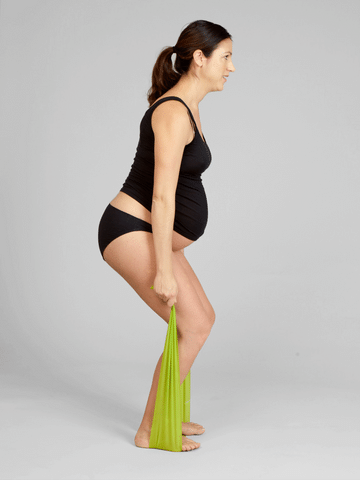Everyday Exercises For Your Pelvic Floor
- Share this article Copy to clipboard

Dictionary definition aside, exercising is a concept that can mean wildly different things to different people. But, no matter your fitness level (or your love, hate, or indifference when it comes to physical activity) exercising your pelvic floor is key to promoting and protecting your bodily health. A strong pelvic floor is one that can elongate and flex to support your body throughout the day, so tending to those muscles requires more than a few Kegels (which, by the way, aren’t always done correctly!). For your pelvic floor muscles to function correctly, it’s important to strengthen and release tension in other areas of the body, like your back and hips.
Whether you experience bladder leaks, prolapse, any other form of pelvic floor dysfunction, or just want to maximize your fitness routine, the good news is that pelvic floor exercises are actually pretty simple— and they’re beneficial for more than just your floor. Nothing can replace customized exercises from a pelvic floor physical therapist, but here are three simple exercises you can do at home to promote a healthy pelvic floor, no gym membership required:
Bra line fit

How it helps: This rotation increases upper back mobility, helping promote better posture and support for your diaphragm, which puts pressure on your floor every time you breathe.
Start on all fours, looking down at the floor with a flat back and engaged core. Lift your right hand to your ear, pointing your elbow away from your body and out to the side.
Turn your arm up towards the ceiling and let your eyes and head follow. Finish with the elbow crossing your body, directed toward the hip. The rotation should come from the thoracic spine (where your bra line is), rather than your low back and hips. Inhale on your way up, exhale on your way down. Complete one set of 10 on each side.
Row with resistance band

How it helps: This exercise prevents rounded, forward posture, which can throw off your body’s internal balance and shift weight unequally across your pelvic floor muscles.
Step onto the middle of a resistance band with both feet, so your ankles are directly underneath your hips. Lean forward, bending at your hips with elbows pointed back, and begin to row.
Your head should look forward to ensure proper spinal alignment. Exhale as you pull up and back, and inhale as you bring your arms back down. Try three sets of 12 reps regularly.
Army crawl

How it helps: Foam rolling your quad muscles releases tension in your thighs and improves hip mobility.
Place your forearms on the floor, and position a foam roller beneath the middle of your thighs. As you crawl forward on your forearms, allow the roller to slide down towards your knees. Then crawl backwards with your forearms as the roller slides up your legs towards the tops of your thighs. Breathe throughout!
Foam rolling is a great way to release muscle tension in your body, and improve hip mobility. Your deep hip muscles are connected to—you guessed it—your pelvic floor muscles, so anything you can do to reduce stress, relieve tension, and improve your body’s shock absorption will help regulate your pelvic floor’s workload throughout the day.
How do you take care of your pelvic floor? Share your favorite exercises in the comments.


